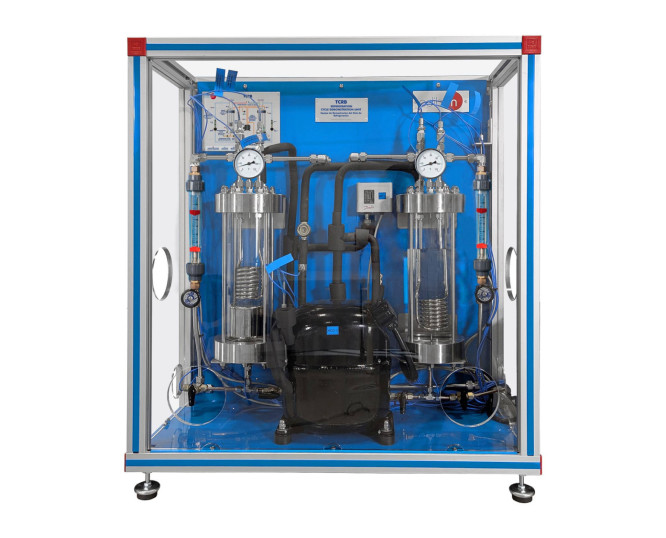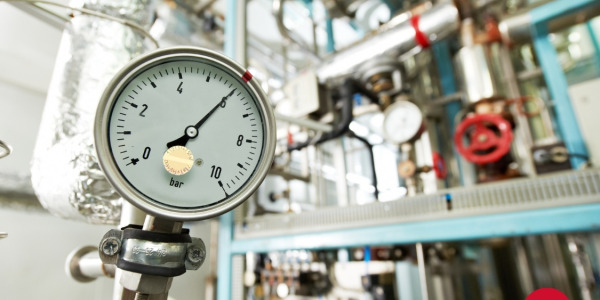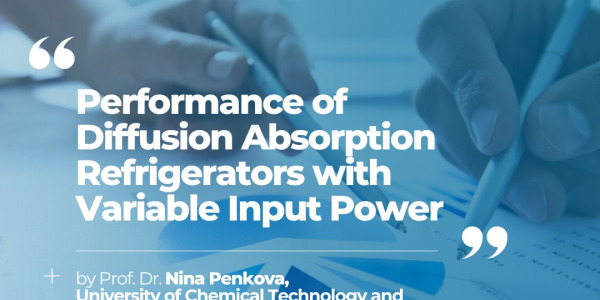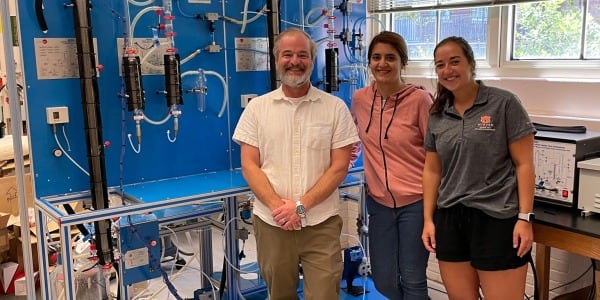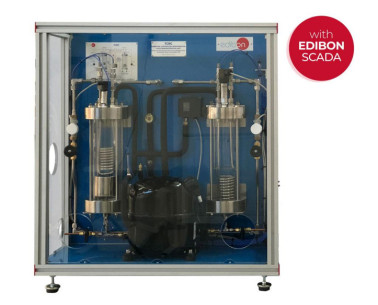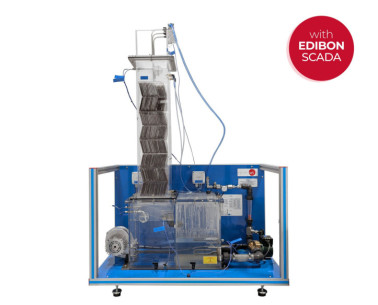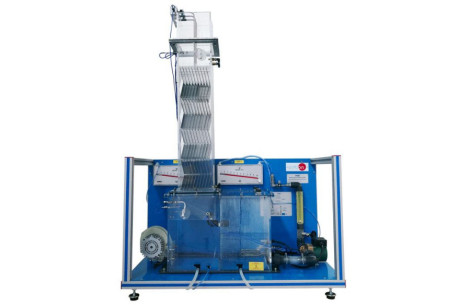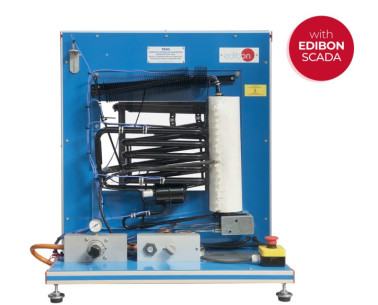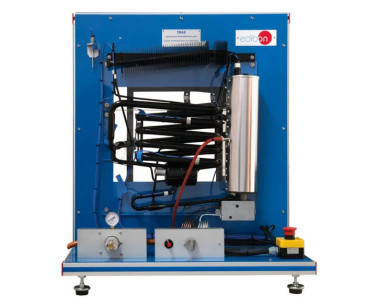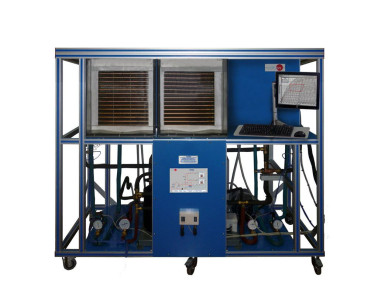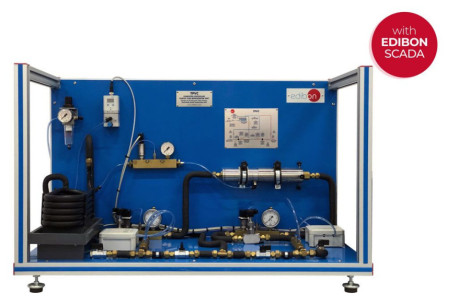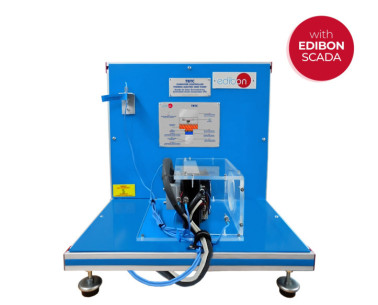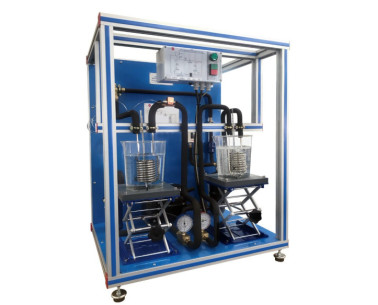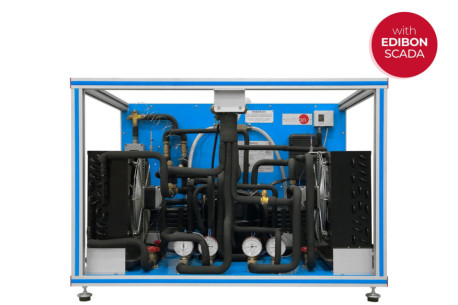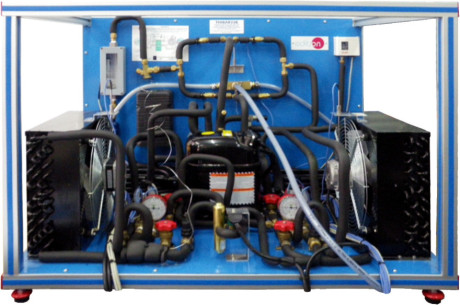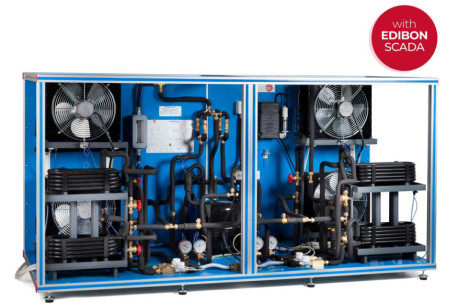L’Unité de Démonstration du Cycle de Réfrigération, "TCRB", conçu par EDIBON, permet la démonstration du cycle de réfrigération par compression de vapeur et du cycle de la pompe à chaleur, avec une observation visuelle de tous les processus importants.
La réfrigération par compression de vapeur et le cycle de la pompe à chaleur jouent un rôle essentiel dans la conservation des aliments et des produits pharmaceutiques, la climatisation et les pompes à chaleur, ainsi que dans d’autres procédés industriels et commerciaux.
Grâce à l’utilisation d’un fluide frigorigène non toxique, ayant une faible pression de vapeur (frigorigène SES36, respectueux de l’environnement), les processus d’évaporation et de condensation sont clairement visibles à l’intérieur des cylindres en verre (évaporateur et condenseur).
L’évaporateur est constitué d’un cylindre vertical en verre contenant du SES36, fermé à ses deux extrémités. Il comporte à l’intérieur un serpentin en cuivre nickelé.
Un compresseur hermétique est chargé d’extraire la vapeur depuis l’évaporateur et de la comprimer avant de l’envoyer vers le condenseur. La basse pression dans l’évaporateur provoque l’ébullition du frigorigène. L’eau circulant à l’intérieur du serpentin réchauffe le frigorigène, entraînant la formation de vapeur et une diminution de la température de l’eau.
Depuis le compresseur, la vapeur à haute pression passe dans le condenseur.
Le condenseur est, comme l’évaporateur, un récipient en verre fermé à ses deux extrémités, avec un serpentin en cuivre nickelé à l’intérieur. La vapeur se condense sur la surface du serpentin et tombe au fond du condenseur. La chaleur libérée lors du changement d’état du frigorigène est transférée à l’eau de refroidissement circulant dans le serpentin.
La vanne à flotteur située à la base du condenseur, qui agit comme une vanne de détente, contrôle le débit du fluide frigorigène à haute pression retournant vers l’évaporateur. Après être passé par la vanne à flotteur, le frigorigène se détend en formant un mélange liquide-vapeur à la même pression que celle de l’évaporateur, et tout le cycle se répète.
De plus, le condenseur est équipé, dans sa partie inférieure, d’une vanne d’isolement pouvant être fermée pour démontrer la technique utilisée dans la maintenance des installations frigorifiques, tant commerciales qu’industrielles, où toute la charge de frigorigène est récupérée et stockée dans le condenseur. Cette technique est importante pour montrer comment éviter une éventuelle fuite de gaz frigorigène lors des opérations de maintenance.
L’unité permet un fonctionnement en toute sécurité, puisqu’il intègre différents éléments de protection : il dispose d’un pressostat haute pression qui arrête le compresseur lorsque la pression dans le condenseur est trop élevée, et, de plus, dans la partie supérieure du condenseur, l’appareil dispose d’une soupape de sécurité qui s’ouvre lorsque la pression dépasse la valeur maximale autorisée.
En réglant le débit d’eau dans les serpentins de l’évaporateur et du condenseur au moyen de vannes de contrôle, il est possible de faire varier les pressions de condensation et d’évaporation.
L’instrumentation fournie avec l’unité permet de contrôler tous les paramètres principaux et de connaître, à tout moment, les mesures suivantes :
- La température et la pression du fluide frigorigène (vapeur et liquide) dans l’évaporateur et le condenseur.
- La température des processus de compression et de détente.
- La température d’entrée et de sortie de l’eau dans les serpentins de l’évaporateur et du condenseur.
- Le débit d’eau dans chacun des deux serpentins.
- La température ambiante.
- La puissance électrique utilisée lors de l’étape de compression.
 Préférences sur les cookies
Préférences sur les cookies

